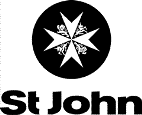Introduction
Heat Exhaustion is caused by a loss of salt and water from the body, usually through excessive
sweating.
It develops gradually and it usually happens to people who are not acclimatised to hot humid conditions
or people that are unwell, especially those with illnesses that cause vomiting and diarrhoea.
They are more susceptible than others to developing heat exhaustion.
A dangerous and common cause of heat exhaustion is the excessively high body temperature and other physical
changes that result from certain drugs taken for pleasure, such as ecstasy. The user sweats profusely,
due to prolonged over activity then dehydration develops leading to heat exhaustion. These effects coupled
with the drug’s effect of the temperature regulating centre of the brain can lead to heatstroke and even cause death.
Recognition
Recognition features may include:
- Headache
- Dizziness and confusion
- Loss of appetite
- Nausea
- Sweating with pale clammy skin
- Cramps in the arms, legs and the abdominal wall
- Rapid, weakening pulse
- Rapid, shallow breathing.
Treatment
Your aims are to replace any lost body fluids and salt; to cool the casualty down, if
necessary, and to obtain medical help.
- Help the casualty to a cool place,
- Get them to lie down with their legs raised
- Give them plenty of water
- Follow if possible with a weak salt solution - 1 teaspoon of salt per litre of water, assist the casualty to drink it.
- Even if the casualty recovers quickly, ensure that they see a Doctor.
- If the casualty’s responses deteriorate place them into the recovery position and dial 999 or 112 for an ambulance.
- Monitor and record any vital signs – the level of response, the pulse and breathing rate.
- Be prepared to give rescue breaths and chest compressions if necessary.

